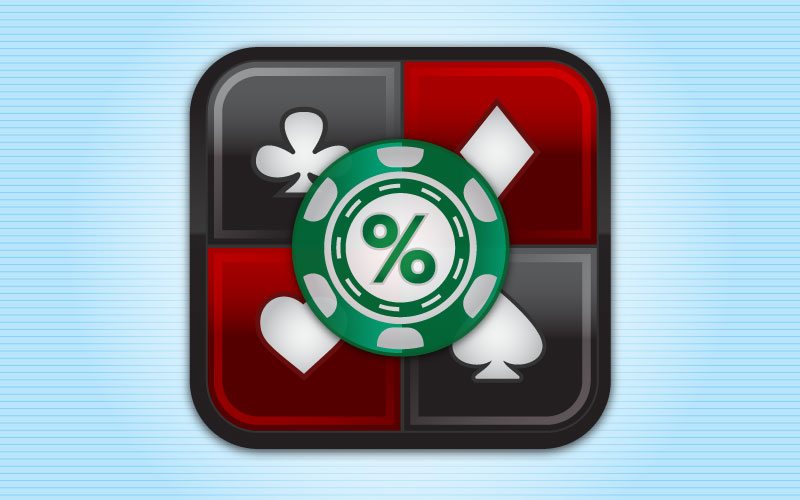Last week I said that we would look more at the turn. Instead, I’ve decided that we’re going to look at something else that will be more useful: hitting pairs with different ranges. It’s fairly easy to see how many draws ranges have and if those draws are connecting on certain boards, but it’s a little more difficult to see how the pair-based hands work, so that’s what we’re going to look at today.
The Basic Scenarios
There are two types of pairs you can hit: connecting with the board or pocket pairs. Assuming no one flops a set, two pocket pairs on the flop like AA vs. QQ on K84r have an equity difference of 92/8. This is basically the same as if the higher pair is flopped since AK vs. QQ on K84r is about 91/9. A pocket pair against a flopped lower pair like AA vs. KQ on K84r has an equity advantage of 81/19. While that might not seem like much of a difference, the key here is that the lower pair more than doubles its equity because it has a lot more outs. In the first scenario, only the two queens can save the lower pair. However, in the second scenario, there are two kings and three queens that can improve the hand.
When both players flop pairs, but one player has a lower kicker like with AK vs. KQ on K84r, then the equity advantage is 87/13. When both players flop pairs, and one is lower than the other like AK vs. 98 on K84r, the advantage is 81/19. Again, flopping a pair this way gives you more outs, so you have more equity.
The point of looking at each of these scenarios is to see two things. First, if you have a lower pair than your opponent, you have a lot more equity when your pair connected with the board (as opposed to having a pocket pair). Second, pair vs. pair scenarios all give the higher pair an overwhelming advantage unless the lower pair has other draws that can be hit.
Wide, Late-Position Ranges
Players who open raise in late position are more likely to have an ace in their hand than a jack. This means that, in terms of making pairs, they’re going to hit ace-high flops much more often than other hands. For an extreme example of how this works, let’s consider how QQ does against the top 35 percent of hands (according to PokerStove) on different flops. The top 35 percent of hands is {55+,A2s+,K3s+,Q6s+,J7s+,T7s+,97s+,87s,A4o+,K8o+,Q9o+,J9o+,T9o} for the purposes of this example.
- On As8h4d, QQ has 60%.
- On Ks8h4d, QQ has 68%.
- On Qs8h4d, QQ has 95%.
- On Js8h4d, QQ has 78%.
As the top card on the flop decreases, the equity that QQ has increases because the 35 percent range flops higher pairs less often. Even the difference between the A-high flop and the K-high flop is huge. The point of this example is to show you how much this type of ace-heavy and king-heavy range depends on an ace specifically coming on the flop to have good equity.
Tight, Early-Position Ranges
Now let’s look at an example on the far end of the spectrum. What happens whenever a very tight, strong range faces QQ on different flops? We’re going to put QQ against the top five percent of hands (according to PokerStove). That range is {99+,AJs+,KQs,AKo}.
- On 8s5h2d, QQ has 66%.
- On 9s5h2d, QQ has 60%.
- On Ts5h2d, QQ has 59%.
- On Js5h2d, QQ has 59%.
- On Qs5h2d, QQ has 96%.
- On Ks5h2d, QQ has 49%.
- On As5h2d, QQ has 44%.
Here we have a similar thing happening. The higher the cards on the flop, the more of a chance that QQ gets out-flopped. However, what’s important to notice here is how the values flatten off on the J-high, T-high and 9-high flops. QQ doesn’t gain much equity on one flop compared to another until it gets down to the 8-high flop range because that’s when the top five percent of hands stops flopping pairs with equity and sets.
What you will also notice here is that QQ is flopping less equity overall when compared to the situation against the top 35 percent of hands. This is because QQ is facing less air overall, so the top five percent of hands is more likely to flop overpairs in terms of percentages.
How to Use This Information
The point of presenting all of this information is to show you how you can compare your opponent’s range with the flop to immediately get an idea of whether or not your opponent is flopping strong pairs often. While A-high flops will tend to hit more ranges, it’s much more important of a factor whenever you’re dealing with wide, loose ranges than when you’re dealing with narrow, tight ranges like those from someone who opens in early position or someone who 3-bets with a tight range.
When you learn how to read flop textures, it’s much easier to pay attention to the draws that could be there. What’s harder is to learn to think about how likely your opponents are to flop strong or weak pairs. The nature of your opponent’s range and how wide it is will give you some clues about which types of pairs he or she is more likely to flop.
For example, if your opponent is open-raising, then you’ll be more likely to see overpairs and top pair hands from them. On the other hand, if they call your open pre-flop, then hands like QQ+ and AK will be less likely to be in their ranges. Instead, pocket pairs and suited connectors are going to make up much more of their range, so they’ll be more likely to out-flop you on boards with medium cards. Pay attention to the nature of your opponent’s range, and figuring this out will become pretty easy.
Submit your review | |









